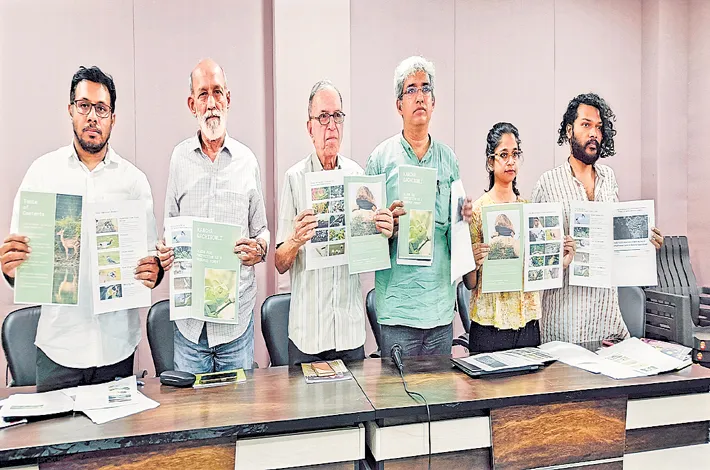RBI towards 100 per $: Should RBI support?
14-01-2025 12:00:00 AM

Dr. Kishore Nuthalapati
Indian Rupee touched all-time low of Rs. 86.68 per US Dollar on 13th January 2025 which is quite steep and refractory. In year 2014, it was Rs. 60 per USD implying the depreciation as 43% in 10 years. Interest rates, inflation, foreign investment flows, geopolitical risks and trade balances influence Rupee exchange rate.
In its November 2024 report, SBI expected that Rupee could depreciate 10% over the next four years implying levels of Rs. 93, but few market participants hint that Rupee may depreciate up to 100 per US Dollar in a couple of years.
The depreciation of Rupee is despite RBI’s active support to Rupee. During the past 15 months, RBI may have spent about $70 billion (~Rs. 6,00,000 crs) to support Rupee’s exchange rate. Currently, India’s forex reserves are $635billion down from the all-time higher $705 billion in September 2024.
Currency depreciation may normally help exporters as they may earn higher profits. But, as per Government data, despite Rupee’s depreciation during November 2023 to November 2024, imports increased at a higher proportion than the increase in exports. In fact, during November 2024 exports declined when compared with November 2023 and the total trade remained in deficit for a long time.
Therefore, rather than Rupee depreciation, Real Effective Exchange Rate (REER) should be used to assess the trade competitiveness against other currencies. RBI computes REER with 2015-16 as base year. REER is an index of Rupee’s value against 40 currencies basket and is inflation adjusted.
The REER for November 2024 is 108.14. If REER is more than 100 currency is overvalued and vice versa. Presently, while Rupee has depreciated to its all-time lows, due to REER being more than 100, the export competitiveness is low as seen in the declining exports.
In the present uncertain situation, should RBI consider REER as per which Indian Rupee is overvalued and therefore allow Rupee to further depreciate. Or should RBI be concerned about currency stability and therefore should support Rupee against further depreciation.
Following the global financial crisis in year 2008 Indian Rupee depreciated by 22% against US Dollar. The Rupee’s REER was 100 in year 2008 and slipped to 95 in year 2009. The reasons for the depreciation were mostly external.
The REER for countries including Europe, Australia, Canada, Japan, etc were lower than 100 as US Dollar appreciated significantly against most of the other currencies. Therefore, to support Rupee’s exchange rate, RBI sold $35 billion in year 2009. Those efforts brought back the Rupee’s value from the deeply depreciated levels.
India has flexible exchange rate system as per which RBI intervenes only if the exchange rate movements are drastic and unjustified. If RBI endeavors to support Rupee for a long time against the market forces, it may negatively impact exporters negatively. On the other side, with unwarranted support, importers may not strive to adjust their costing warranted by the currency depreciation.
But the present depreciation has several reasons. The yield on US Government paper is higher up to 5% which exerts pressure on Rupee to depreciate more. Inflation in India is still higher at 5.2%. Geopolitical tensions impacting oil supplies and global trades are also exerting pressure on Rupee.
Presently, Rupee is depreciating to find its level as per the REER. Measures to support the exchange rate against the fundamental value will not only be very expensive and uncertain but may not provide any trade competitiveness.
Instead, RBI and Government should look at providing adequate credit support, interest rate support, improving market infrastructure, timely sanctions on imports & exports in tune with domestic prices of sensitive items, and support in terms of market access initiatives. It is then Rupee will regain its strength else Rs. 100 per US Dollar may not sound unrealistic.
Disclaimer: Dr. Kishore Nuthalapati is an Economist and a Corporate Finance Professional. Dr. Kishore is serving as the CFO of BEKEM Infra Projects Pvt Ltd, Hyderabad, India. Views are his personal and do not reflect those of any of the organizations he is or was associated with.








